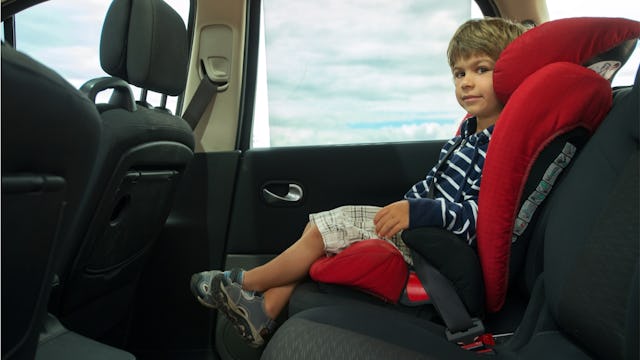As Kids Get Older, Parents Get Less Strict About Proper Car Seat Use

Safe car seat and booster usage in older kids is on the decline
Proper car seat use for babies and toddlers is on the rise, but there are new studies suggesting that when it comes to older kids, car seat and booster seat use rates are on a dangerous decline.
National Child Passenger Safety Week is this week and it’s an important reminder to double and triple check how your children’s car seats are installed. According to the experts at the Department of Transportation, babies should ride in a rear facing car seat until at least two years old. Children should remain in rear facing seats as long as possible (some rear facing seats can go up to 90 pounds) and new research finds more parents than ever before are following that guideline.
But as kids get older, the proper use and installation of car seats is declining, specifically when it comes to booster seat use among children aged four to seven. “If we try to put a child in an adult-sized seat before they’re ready, then it doesn’t fit them right,” Dr. O’Neil from the Riley Hospital For Children said. “It hits them across the neck, and it really can have tragic consequences in terms of injury in motor vehicle crashes.”
Traffic accidents continue to remain a leading cause of death among children in the U.S. “Car seats and boosters can prevent many of those fatalities and injuries,” Michael L. Prince, director of the Michigan Office of Highway Safety Planning, says. “Older children are more at risk as car seat use goes down despite boosters being less expensive and easier to use than seats for younger children.”
A survey conducted by the Wayne State University Transportation Research Group of Michigan found only 49.7 percent of children age four to seven are using booster seats at all “despite a 2008 law requiring children to be placed in them until they’re eight years old, or until they reach 4-foot-9,” the study found.
According to Dr. O.Neill’s research, another reason for the decline in safety with older children is the harness being used incorrectly in forward-facing seats, as parents don’t use the top tether anchor on the seat.
State Farm conducted a parental survey and their results support O’Neill’s study, finding that two-thirds of parents didn’t anchor the top tether of the forward-facing car seat to the back of the vehicle seat. “Without the top tether, in the event of a crash, the seat could move forward several inches, putting the child at greater risk of serious injuries,” says Chris Mullen, Director of the Technology Research Division at State Farm.
Dr. O’Neill’s study also found 31 percent of eight to 12 year olds were permitted to sit in the front seat. Experts warn kids should remain in the back seat until they’re at least 13 and the seatbelt fits them properly because of the risks airbags pose to younger children.
Whatever your children’s ages, take a minute to check car seats against expert recommendations – it could mean the difference between life and death.
This article was originally published on